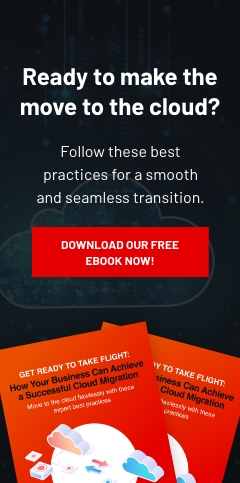We live in a world driven by data, and it has become the backbone of businesses around the globe. According to Siemens CEO Joe Kaeser, "Data is the new oil, some say the gold of the 21st century." However, natural disasters, cyberattacks, equipment failure, and power outages can lead to data loss and downtime, which can hamper your company's productivity and reputation.
Protecting your data with a reliable backup strategy allows your organization to recover as quickly as possible in the event of a disaster. When creating a backup strategy for your organization, keep these vital components in mind.
1. On-site backups
Having on-site backups allows you to restore your data faster than if you had only cloud and off-site tape backups. This means you can get back to business quickly..
2. Off-site backups
While on-site backups are a must, you shouldn't rely on them alone. Should anything happen to your on-site data center, the data they contain could also be damaged or destroyed. This is why you should have copies of your backups in off-site locations such as the cloud. This allows you to restore your data in the event your on-site backups are compromised or destroyed.
3. Efficient backup schedule
Backing up your data regularly ensures that if your network crashes, you'll have the most recent copy of your data. When creating a backup schedule, consider how often data is updated, what data is being accessed, and how much space is required for the backups. These points will help you identify what data needs to be backed up and how often it should be backed up.
Protecting your data with a reliable backup strategy allows your organization to recover as quickly as possible in the event of a disaster.
4. Retention of older backups
Keeping an archive of older backups is a fail-safe plan in case your recent backups become corrupted or compromised. This allows you to restore your data to the last, most usable version. Since it's impossible to keep a repository of all your old backups, determine how far back your organization needs to recover data in case a disaster occurs
5. Organized storage system
This largely applies to tape-based backup solutions. The labeling system and storage repository for these types of backup must be clear and organized. This allows your IT staff to find a specific backup from a specific date without wasting time digging through several boxes of backups.
6. Automated backups
While performing regular backups is an important business operation, doing it manually can take up valuable time and manpower. In addition, manual backups are prone to human error. An automatic backup system like the one offered by Complete Document Solutions can perform backup tasks intelligently, eliminating the risk of human error. It also allows your organization to adhere to a strict backup schedule while freeing up your personnel to focus on goal-oriented tasks.
7. Backup testing
To ensure your backups are working the way they're supposed to, run regular assessments on a test server or system. This will enable you to find out if the backups can be restored and how long the process will take.
Your IT staff must also know how to access and restore your data as quickly as possible following a disaster. Compile a list of potential scenarios and conduct tests for each one. Analyze the results of each test and identify what areas of your backup process need improvements.
To ensure that your data and your business are safe, partner with a trusted managed IT services provider like Complete Document Solutions. Our experienced team of IT specialists has been providing businesses in Torrance, CA with reliable IT services since 1994. Call us today to learn more.
Don't have an IT roadmap?



Leave a comment!